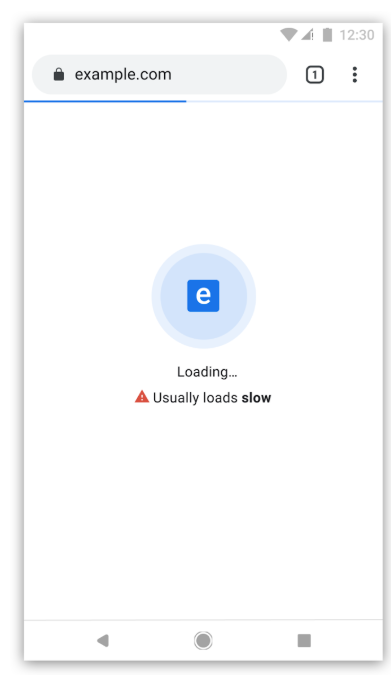In the digital age, we enjoy nearly instantaneous access to information. But slow page loading speeds disrupt this continual flow of data and can lead to frustration. Google recognizes this and has recently begun taking steps to penalize sites that take too long to load.
Why Google Wants to Penalize Slow Page Loading Speeds
Google prides itslef on being a company built upon the idea of providing a quality user experience to all those who use its products and services. Therefore, slow page loading speeds stand in direct conflict with their core values.
Their continual drive to push the boundaries of the online experience has led them to begin developing new ways to signal to users which pages will load quickly, and which pages will not. That’s the idea behind their “speed badges” which are currently being developed.
What Google’s Speed Badges Will Look Like
Although not finalized, Google has put forth a few ideas for how their speed badges will appear when people are using their Chrome Web Browser.
Let’s take a look!

One way Google intends to use page speed badges is to let users know when they can expect to wait longer than average for a page to load. This badge will likely appear to users in the following format when they click on a “slow page”:

For fast-loading pages, Google is also toying with the idea of adding a green progress bar instead of the traditional blue bar to act as a subtle way of letting users know that the page will load quickly:

What this Means Moving Forward…
Google already penalizes slow sites with its ranking system but with the implementation of their page speed badges, a site that takes longer than average to load will be even further affected. In today’s increasingly time-conscious society, every second is highly valued.
If people see that your site takes longer than average to load, they’re not likely to click through to your pages. This makes it all the more important for you to assess your website’s page loading speed.
How to Avoid Getting Burned by Google’s Page Speed Badges
There are a couple of things you can do to make sure your site won’t be marked as “slow” in the Chrome Browser.
First, it’s a good idea to perform an assessment of your site to see where your pages are lagging. This can be done using a free tool called Google Page Speed Insights. Just simply enter the URL for the page you wish to evaluate into the search box:

You’ll then be provided with a list that illustrates some of the reasons your pages may be lagging and the estimated time savings you can achieve by addressing these issues:

The next option is for those who are thinking of building a new site, or starting their first site from scratch. This involves hiring a professional web developer that prioritizes speed in their website design process. For example, CreoLogic has been building fast, search engine optimized websites for nearly 2 decades.
A good website developer has the know-how and experience to make sure your site will load quickly and therefore not be penalized by Google’s speed badges.
Whether you currently have a website or you’re looking to build one, it’s important to consider the impact Google’s Page Speed badges will have on your business when they are released in the near future.






